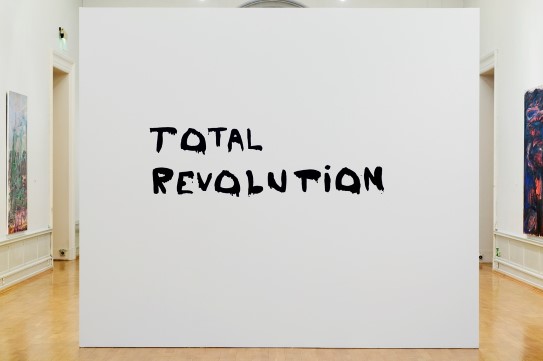Untitled Wall Painting (Total Revolution)
Gardar Eide Einarsson
Transcription
Narrator:
How can an artist revolutionize a museum? How can he change a system of which he himself is a part?
It is the museum that decides whether works should be given space or be rejected.
Gardar Eide Einarsson:
“An integral element of this work is that it puts a question mark against the possibility of being able to implement a type of total revolution.”
Narrator:
You just heard the artist Gardar Eide Einarsson. He explores the desire for various forms of revolutions, the range between the possible and the impossible.
Gardar Eide Einarsson:
“Now that I’ve yet again grown slightly older, perhaps I feel even more strongly that this is a difficult position to take, and that perhaps it’s more productive to feel oneself to be in a kind of ongoing negotiation with authority. But at the same time, I still feel the attraction of this type of statement, and this type of impulse, and the sense of justice that perhaps lies behind it.”
Narrator:
The quote Total revolution was taken from a statement by the artist Lee Lozano.
The year was 1969 and the Art Workers’ Coalition, of which Lozano was a member, was holding protests against museums in New York.
The Coalition’s aim was to reform policies that they saw as racist, discriminatory against women, and exclusionary.
Einarsson’s 2001 wall painting forms part of a political tradition within conceptual art.
Gardar Eide Einarsson:
“I’ve been very interested myself in critiques of institutions, and particularly critiques dating from the 1960s, so that was slightly in the back of my mind when I made this work. But what I felt sometimes that it slightly lacked, was speaking about oneself as an artist, as someone that actually exists within this system, and not just standing on the outside and observing and commenting”.